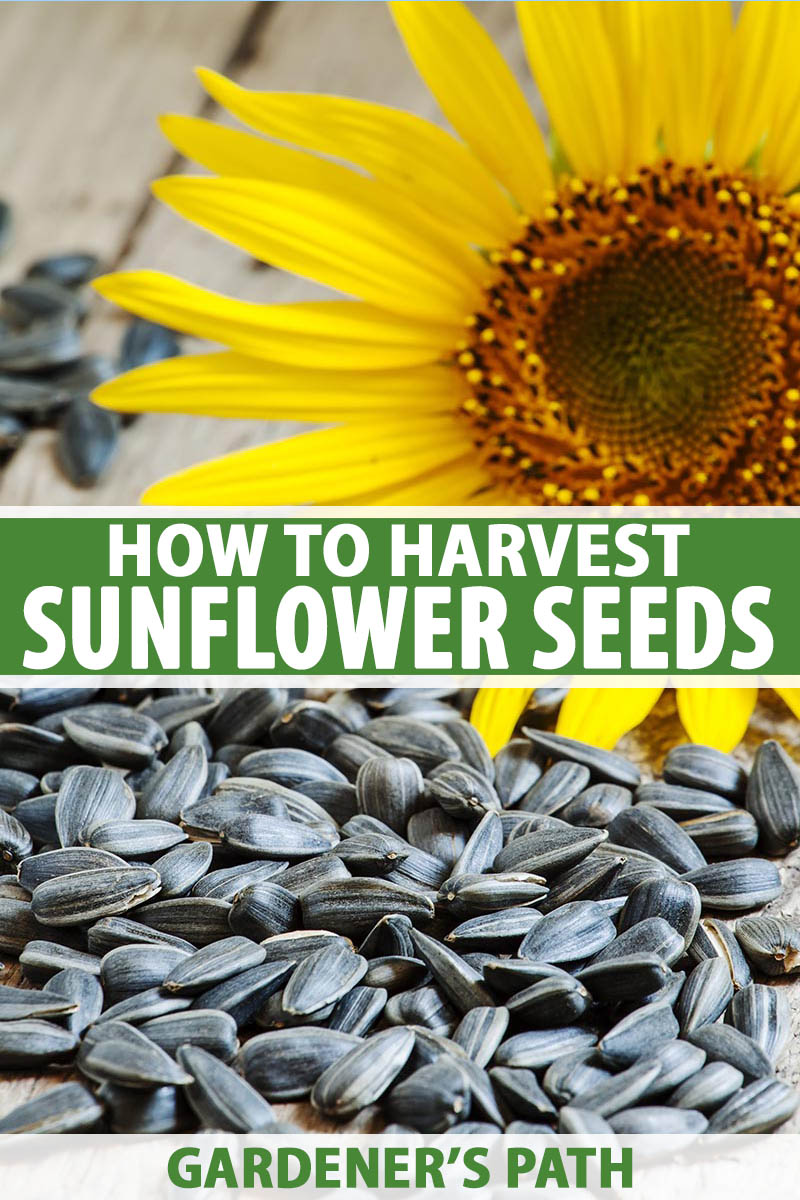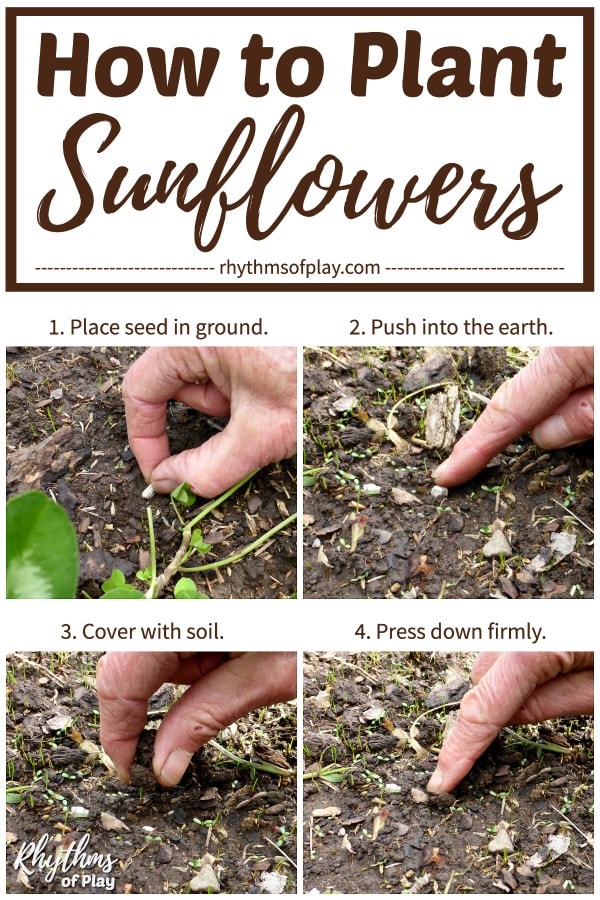Want to fill your garden with bright, cheerful sunflowers? Growing sunflowers from seeds is easier than you might think, and the reward is stunning blooms that brighten any space.
Whether you’re a beginner or have tried gardening before, this guide will walk you through every step to help your sunflowers thrive. Ready to see your garden come alive with golden petals? Let’s get started and make your sunflower growing experience simple and successful!

Credit: gardenerspath.com
Choosing The Right Seeds
Choosing the right seeds is the first step to growing healthy sunflowers. The type of seed affects how tall and bright your flowers will be. Picking good seeds helps your plants grow strong and resist pests. This section guides you on selecting the best sunflower seeds for your garden.
Selecting Sunflower Varieties
Sunflowers come in many shapes and sizes. Some grow very tall, while others stay small. Some have large heads, others have many small flowers. Choose seeds that fit your garden space and style. Consider the flower color too. Yellow is most common, but red, orange, and white also exist. Pick a variety that matches your taste and garden needs.
Where To Buy Quality Seeds
Buy seeds from trusted stores or online shops. Check that seeds are fresh and not expired. Quality seeds have a higher chance to sprout well. Avoid buying seeds from unknown sellers. Read reviews or ask gardeners for recommendations. Good seeds make growing sunflowers easier and more fun.
Preparing The Soil
Preparing the soil is the first step to grow healthy sunflowers from seeds. Good soil helps seeds sprout strong roots. It also gives plants the nutrients they need to grow tall and bright. Take time to prepare the soil well before planting.
Soil Type And Ph
Sunflowers grow best in loose, well-drained soil. Sandy loam or loamy soil works great. Avoid heavy clay soil that holds too much water. Sunflowers do not like soggy roots.
The soil should have a pH between 6.0 and 7.5. This range is slightly acidic to neutral. Test the soil with a simple pH kit. Adjust it by adding lime to raise pH or sulfur to lower it.
Adding Nutrients And Compost
Sunflowers need nutrients like nitrogen, phosphorus, and potassium. Mix compost or well-rotted manure into the soil. This improves soil texture and adds natural nutrients.
A balanced fertilizer can help if the soil lacks nutrients. Spread it evenly before planting. Avoid adding too much fertilizer, as this can harm young plants.
Planting Seeds
Planting sunflower seeds is the first step to growing bright, tall flowers. Prepare your soil well and choose a sunny spot. Sunflowers need space and care right from the start. Planting seeds properly helps them sprout strong and healthy. Follow these tips to start your sunflower garden with success.
Best Time To Plant
Plant sunflower seeds after the last frost date. Soil temperature should reach at least 50°F (10°C). Warmer soil helps seeds sprout faster. Spring is usually the best season. Early planting gives sunflowers a full growing season. Avoid planting too early to prevent seed rot.
Seed Spacing And Depth
Plant seeds 1 to 2 inches deep in the soil. This depth keeps seeds moist and safe. Space seeds about 6 inches apart for small varieties. Large sunflowers need 12 to 18 inches between seeds. Proper spacing allows good air flow. It also helps sunflowers grow tall and strong.

Credit: www.rogersgardens.com
Watering And Care
Sunflowers need the right care to grow tall and strong. Watering is very important for healthy plants. Proper care helps sunflowers bloom beautifully and resist diseases. Understanding how much water and care your sunflowers need is key to success.
Watering Frequency
Sunflower seeds need moisture to start growing. Water them gently after planting. Keep the soil moist but not soggy during the first two weeks.
Once seedlings appear, water deeply once or twice a week. Let the soil dry slightly between waterings. Avoid overwatering to prevent root rot.
During hot, dry days, increase watering to keep soil moist. Mature sunflowers need less water but benefit from deep watering.
Mulching Benefits
Mulching around sunflowers keeps soil moist longer. It reduces water evaporation and helps control weeds. Mulch also keeps roots cool during hot weather.
Use straw, leaves, or grass clippings as mulch. Apply a 2-3 inch layer around the base of your plants. Keep mulch a few inches away from the stem to avoid rot.
Mulching saves time by reducing how often you water. It supports sunflower growth by maintaining steady soil moisture.
Sunlight And Temperature Needs
Sunflowers need the right sunlight and temperature to grow strong and tall. These two factors help the seeds sprout and the plants bloom beautifully. Understanding their sunlight and temperature needs is key to a healthy garden.
Optimal Sunlight Exposure
Sunflowers love the sun. They need at least six to eight hours of direct sunlight daily. More sun means bigger flowers and stronger stems. Choose a spot in your garden that gets full sun. Avoid shady areas. Sunlight helps the plant make food through photosynthesis. This energy fuels growth and flowering.
Temperature Range For Growth
Sunflowers grow best in warm temperatures. The ideal range is between 70°F and 78°F (21°C to 26°C). Seeds can sprout when the soil temperature reaches 50°F (10°C). Avoid planting in cold or frost-prone areas. Too much heat over 85°F (29°C) may slow growth. Keep soil moist during hot days to help plants thrive.
Managing Pests And Diseases
Growing sunflowers from seeds is rewarding, but pests and diseases can harm your plants. Managing these problems helps your sunflowers grow tall and healthy. Knowing common pests and diseases keeps your garden safe. Natural ways to control pests protect the environment. Preventing diseases stops damage before it starts.
Common Pests
Sunflowers attract pests like aphids, caterpillars, and beetles. Aphids suck sap from leaves, causing yellow spots. Caterpillars chew on leaves and flowers. Beetles eat holes in leaves, weakening plants. Watch your sunflowers daily for signs of pests. Early detection stops pests from spreading fast.
Natural Pest Control
Use natural methods to keep pests away. Spray water to remove aphids from leaves. Introduce ladybugs, which eat aphids and small insects. Sprinkle neem oil on plants to repel pests. Plant marigolds nearby to deter harmful bugs. Avoid harsh chemicals that can harm beneficial insects.
Disease Prevention
Diseases like powdery mildew and rust affect sunflowers. Avoid overcrowding plants to improve air flow. Water plants early in the day to dry leaves fast. Remove any infected leaves or plants immediately. Use clean tools to prevent spreading disease. Rotate sunflower locations each year to reduce soil disease.
Supporting Tall Sunflowers
Sunflowers can grow very tall, sometimes reaching over six feet. Tall sunflowers need support to stay upright and healthy. Without support, strong winds or heavy flower heads can cause them to bend or break.
Supporting sunflowers helps them grow straight and strong. It also protects the plant from damage and improves their overall appearance. Proper support makes your garden look neat and helps the flowers last longer.
Staking Techniques
Use a wooden or metal stake to support each tall sunflower. Place the stake about 6 inches away from the stem. Push it deep into the soil for a firm hold. Tie the sunflower stem gently to the stake with soft twine or cloth strips. Avoid tight knots to prevent stem damage. Check the ties regularly and loosen them as the plant grows. For very tall sunflowers, use two stakes and a horizontal support between them. This method gives extra stability against wind.
Preventing Stem Damage
Handle sunflowers carefully to avoid breaking the stem. Always tie the plant loosely to allow natural movement. Avoid placing ties too low on the stem. Use soft, flexible materials for tying. Remove any damaged leaves or stems promptly. Keep the soil moist but not waterlogged to keep stems strong. Mulch around the base to protect roots and maintain moisture. Regularly inspect your sunflowers for signs of stress or damage.
Harvesting And Saving Seeds
Harvesting and saving sunflower seeds is a rewarding step in growing sunflowers. It allows you to enjoy blooms year after year. This process also helps you select the best seeds for future planting. Proper timing and care during harvest are important for seed quality.
When To Harvest
Harvest sunflower seeds when the flower head turns brown. The back of the flower will feel dry and hard. Seeds will look plump and loose from the petals. Cut the flower head with about 12 inches of stem attached. Do this on a dry day to avoid mold.
Seed Drying And Storage
After cutting, hang flower heads upside down in a dry place. Good air circulation helps seeds dry faster. Leave them for about two weeks or until seeds feel hard. Rub seeds off by hand or use a brush. Store seeds in a cool, dry container. Use paper envelopes or glass jars with lids. Label containers with the date and sunflower variety. Proper storage keeps seeds viable for planting next season.
Troubleshooting Common Issues
Growing sunflowers from seeds can bring joy and color to any garden. Yet, some common issues may arise during the growing process. Knowing how to handle these problems helps keep your plants healthy and strong.
Troubleshooting problems early ensures better growth and vibrant flowers. Focus on the most frequent issues gardeners face with sunflower seeds.
Dealing With Poor Germination
Poor germination means few seeds sprout. This problem often results from old or damaged seeds. Check the seed packet for the expiration date before planting.
Soil that is too dry or too cold can stop seeds from growing. Keep the soil moist but not soaked. The ideal soil temperature for sunflowers is between 70°F and 85°F.
Plant seeds about 1 inch deep and avoid planting too early in spring. Seeds need warmth and moisture to start growing well.
Fixing Yellow Leaves
Yellow leaves often signal a problem with watering or nutrients. Overwatering can drown roots and cause leaves to yellow. Water sunflowers only when the top inch of soil feels dry.
Sunflowers need plenty of sunlight and balanced nutrients. Use a fertilizer with nitrogen, phosphorus, and potassium to support leaf health.
Yellow leaves can also mean pests or diseases. Check leaves for spots, holes, or insects. Remove damaged leaves and treat plants with natural pest control if needed.

Credit: rhythmsofplay.com
Frequently Asked Questions
How Long Do Sunflower Seeds Take To Sprout?
Sunflower seeds typically sprout within 7 to 10 days after planting. They need warm soil around 70°F (21°C) for optimal germination. Keep the soil moist but not waterlogged to ensure healthy seedling growth.
What Soil Type Is Best For Growing Sunflowers?
Sunflowers thrive in well-draining, loamy soil rich in organic matter. The soil should have a pH between 6. 0 and 7. 5. Avoid heavy clay or overly sandy soils to promote strong root development.
How Much Sunlight Do Sunflowers Need Daily?
Sunflowers require full sun, ideally 6 to 8 hours of direct sunlight daily. Ample sunlight helps them grow tall and produce large blooms. Position them in a sunny spot for best results.
When Is The Best Time To Plant Sunflower Seeds?
Plant sunflower seeds in late spring after the last frost date. Soil temperature should be at least 50°F (10°C) for successful germination. This timing ensures optimal growth during the warm summer months.
Conclusion
Growing sunflowers from seeds is simple and rewarding. Choose a sunny spot and prepare the soil well. Plant seeds at the right depth and water them gently. Watch daily as sprouts appear and grow tall. Keep soil moist but not soaked.
Enjoy bright yellow blooms that attract bees and birds. Sunflowers bring joy and color to any garden. With patience and care, you can grow strong, healthy plants. Start your sunflower journey today and brighten your space naturally.

